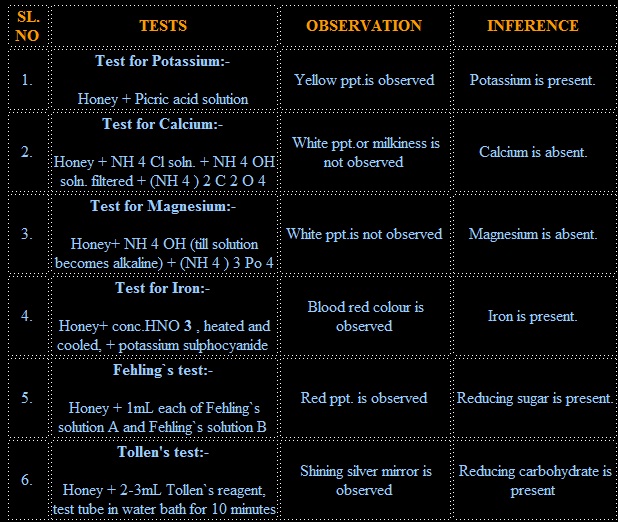





Published on Apr 02, 2024
Aim is To analyze the available honey for presence of different minerals and carbohydrates . Honey, thick, sweet, super saturated sugar solution manufactured by bees to feed their larvae and for the subsistence during winter. Bee honey is composed of fructose, glucose and water, in varying proportions. It also contains several enzymes and oils.
The color & flavor depends on the age of the honey and the sources of the nectar .It colored honeys are usually of higher quality than dark coloured honeys. Other high grade honeys are made by bees from orange blossoms, clover and Alfalfa. A well known, poorer grade honey is produced from buckwheat. Honey has a fuel value of about 3307 cal/kg [1520 cal/ lbs]. It readily picks up moisture from the air and is consequently used as a moistioning agent for Tobaco and in baking. Glucose crystallizes out of honey on standing at room temperature, leaving on uncrystallized layer of dissolved fructose. Honey to be marketed is usually heated by a special process to about 66oC [150.01 F] to dissolve the crystals and is sealed to prevent crystallization. The fructose in crystallized honey ferments readily at about 160C.
Test tubes, Test tube stand, Burner, Water Bath.
Fehling solution A, Fehling solution B, Ammonium chloride solution, Ammonium oxalate solution, Ammonium phosphate, Conc. Nitric acid, Potassium sulphocyanide solution .
1. Test for Potassium:-
2ml of honey is taken in a test tube and picric acid solution is added. Yellow precipitate indicates the presence of K+.
2. Test for Calcium:-
2ml of honey is taken in a test tube and NH4Cl solution and NH4OH solution are added to it. The solution is filtered and to the filtrate 2ml of ammonium oxalate solution is added. White ppt. or milkiness indicates the presence of Ca2+ ions.
3. Test for Magnesium:-
2 ml of honey is taken in a test tube and NH4Cl solution is added to it and then excess of Ammonium phospate solution is added. The side of the testtube is scratched with a glass rod. White precipitate indicates the presence of Mg2+ ions.
4. Test for Iron:-
2ml of honey is taken in a test tube and a drop of conc. HNO3 is added and it is heated. It is cooled and 2-3 drops of Potassium sulphocyanide solution is added to it. Blood red colour shows the presence of iron.
1. Fehling`s test :
2mL of honey is taken in a test tube and 1mL each of Fehling`s solution A and Fehling`s solution B are added to it and boiled. Red precipitate indicates the presence of reducing sugars.
2. Tollen`s test:
2-3 mL of aqueous solution of honey is taken in a test tube. 2-3mL of Tollen`s reagent is added. The test tube is kept in a boiling water bath for about ten minutes. A shining silver mirror indicates the presence of reducing carbohydrates.
Observation Table

Ø Potassium is present.
Ø Iron is present.
Ø Calcium is absent.
Ø Magnesium is absent.
Ø Honey contains reducing sugar.